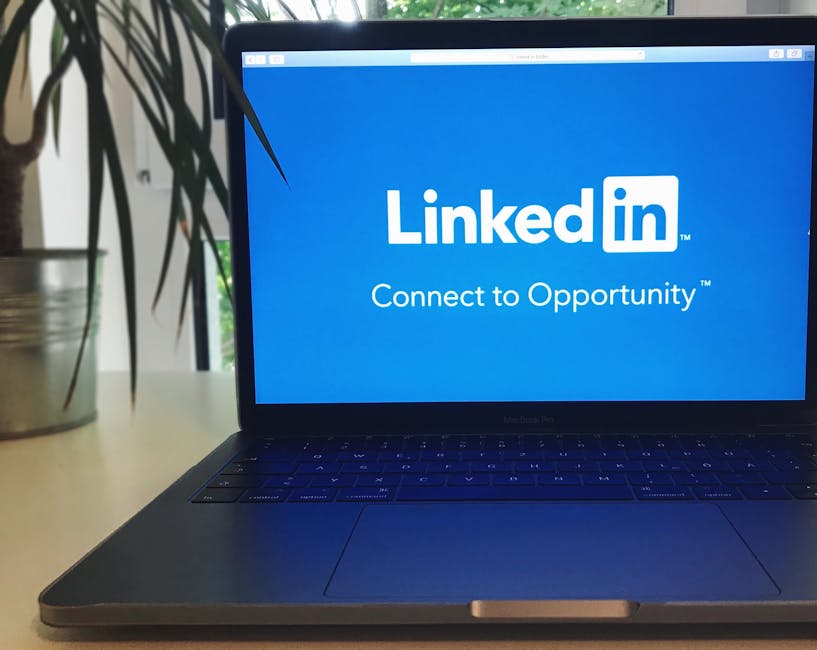Precision targeting on LinkedIn transcends mere demographic filtering; it is the strategic cornerstone for maximizing return on investment in a professional B2B marketing landscape. Unlike broader social media platforms, LinkedIn’s inherent structure – built upon verified professional profiles, company pages, and industry groups – provides an unparalleled dataset for advertisers seeking to connect with specific decision-makers, influencers, and buying committees. The imperative for precision stems directly from the B2B sales cycle’s complexity, the higher average cost-per-click (CPC) on LinkedIn, and the necessity to nurture high-quality leads that directly contribute to revenue. Wasted ad spend, born from generalized targeting, not only depletes budgets but also dilutes brand messaging, generates unqualified leads, and ultimately undermines campaign effectiveness. Therefore, a meticulous approach to audience definition is not merely an optimization technique; it is the foundational prerequisite for any successful LinkedIn advertising endeavor, ensuring that every impression, click, and interaction is directed towards an audience most likely to convert into a valuable business opportunity. The platform’s robust targeting options allow marketers to dissect and reassemble vast professional networks into highly specific, actionable segments, paving the way for hyper-personalized messaging and significantly higher engagement rates.
Understanding the Granular Layers of Core Targeting Attributes
LinkedIn’s Campaign Manager offers a rich tapestry of targeting facets, allowing advertisers to build audiences based on a myriad of professional characteristics. Each attribute serves a distinct purpose in refining the audience, moving from broad strokes to precise, almost surgical, segmentation.
Company Targeting: This foundational layer allows advertisers to reach professionals based on their organizational affiliation.
- Company Size: A critical filter for B2B. Targeting small and medium businesses (SMBs) often requires different messaging and product offerings than targeting large enterprises. For instance, a SaaS solution tailored for startups might focus on companies with 1-50 employees, emphasizing agility and cost-effectiveness. Conversely, an enterprise-grade ERP system would target companies with 1000+ employees, highlighting scalability, integration capabilities, and robust support. Misaligning company size with solution relevance is a common pitfall, leading to irrelevant impressions and a diminished perception of brand fit. The “Company Size” filter allows for selection of specific employee ranges (e.g., 1-10, 11-50, 51-200, 201-500, 501-1000, 1001-5000, 5001-10000, 10000+), enabling nuanced campaign strategies for each segment.
- Company Industry: Directs campaigns to professionals within specific sectors. Whether it’s targeting healthcare professionals with medical device ads, finance experts with fintech solutions, or manufacturing executives with industrial automation systems, industry targeting ensures message relevance. LinkedIn’s extensive list of industries, covering everything from “Computer Software” to “Oil & Energy,” ensures precision. Marketers must consider industry-specific pain points and terminology when crafting ad copy. For example, a cybersecurity firm targeting financial services would emphasize compliance and data integrity, whereas the same firm targeting retail might focus on preventing credit card fraud and protecting customer data.
- Company Name: The cornerstone of Account-Based Marketing (ABM) on LinkedIn. By uploading a list of target company names, advertisers can specifically reach employees within those organizations. This is invaluable for sales teams pursuing specific accounts, allowing marketing to create highly personalized campaigns that pre-warm leads before sales outreach. For example, a company looking to penetrate five specific Fortune 500 companies can target all employees within those companies, or even specific departments/roles within them, with messages directly addressing their strategic objectives or known challenges. This method significantly increases relevance and reduces wasted impressions on non-target accounts.
- Company Followers: A powerful competitive targeting strategy or a way to engage with a highly specific, pre-qualified audience. Advertisers can target followers of their own company page (for re-engagement, product updates) or, more powerfully, followers of competitor pages. This provides an audience that has already expressed an interest in a competitor’s offerings, making them prime candidates for alternative solutions or competitive differentiation messaging. It’s a direct way to tap into an existing pool of relevant interest, enabling “conquest” campaigns designed to sway users towards a different brand.
Job Experience Targeting: This layer focuses on the individual professional’s role, responsibilities, and expertise.
- Job Title: Arguably the most precise job-related filter. Targeting “Chief Marketing Officer,” “VP of Sales,” or “Software Engineer” directly reaches individuals with those specific designations. However, caution is advised: exact job titles can vary widely across companies (e.g., “Software Developer” vs. “Software Engineer”). A best practice is to include common variations and synonyms, or to combine “Job Title” with “Job Function” for broader coverage within a specific role type. For instance, rather than just “HR Manager,” consider “Head of People,” “Talent Acquisition Lead,” and “Human Resources Director” to capture the full spectrum of relevant professionals.
- Job Function: A broader, yet highly effective, targeting option. This allows reaching individuals based on the department or area of their professional responsibilities (e.g., “Marketing,” “Information Technology,” “Human Resources,” “Operations,” “Sales”). This is particularly useful when targeting roles that might have diverse titles but share a common functional area. For example, a project management software might target “Operations” and “Information Technology” functions, knowing that project managers, regardless of their exact title, reside within these departments. It provides a strategic layer of targeting when exact titles are too restrictive or too numerous to list.
- Seniority: A crucial filter for B2B, as decision-making authority often correlates with seniority. LinkedIn allows targeting by seniority levels such as “Entry,” “Senior,” “Manager,” “Director,” “VP,” “C-Level.” A product aimed at strategic decision-makers would focus on Director, VP, and C-Level, while a professional development course might target Entry or Senior level professionals looking to advance. This ensures that the message’s complexity and value proposition align with the recipient’s influence and scope of responsibility.
- Skills: Leveraging LinkedIn’s vast database of member-declared skills and endorsements provides an excellent proxy for expertise and interests. Targeting professionals with specific skills like “Data Analytics,” “Project Management,” “Cloud Computing,” or “Salesforce CRM” allows for highly relevant messaging. This is particularly effective for recruiting, training, or selling specialized tools. For example, a company selling advanced CAD software might target engineers with “SolidWorks,” “AutoCAD,” and “Finite Element Analysis” skills. The precision here is derived from members actively highlighting their proficiencies.
- Years of Experience: Useful for segmenting based on career stage or experience level. A recruiting campaign for senior roles might target 10+ years of experience, while a training program for new managers might target 3-7 years. This ensures that the professional development or career opportunity presented is appropriate for the individual’s current career trajectory.
Demographic and Education Targeting: While less B2B-centric, these layers add further refinement.
- Location: Essential for businesses operating within specific geographic regions or those with a physical presence. Targeting can be as broad as a country or as granular as a specific city, postal code, or a radius around a particular address. For example, a regional consulting firm would target professionals within a 50-mile radius of their office locations, whereas a global SaaS provider might target specific countries or major economic hubs.
- Age/Gender: While not always the primary B2B targeting criteria, these are available. Age can sometimes correlate with seniority or technology adoption comfort. Gender can be used for diversity and inclusion initiatives or specific industry-focused campaigns where gender representation is a factor.
- Education: Targeting based on degrees, fields of study, or specific schools. This can be valuable for alumni networks, executive education programs, or recruiting for roles requiring specific academic backgrounds (e.g., targeting individuals with a “Masters in Computer Science” from top-tier universities for R&D roles).
Interests and Traits Targeting: This category delves into the professional’s demonstrated interests and characteristics.
- Member Groups: Targeting members of specific LinkedIn Groups is a highly effective way to reach niche communities with shared professional interests. For instance, targeting members of a “Digital Marketing Professionals” group ensures high relevance for a marketing automation software provider. These groups often signify a deeper engagement with a topic than general interest categories.
- Interests: LinkedIn uses its vast data to infer member interests based on their content consumption, interactions, and profile data. These can range from “Artificial Intelligence” to “Supply Chain Management.” While broader than group targeting, they offer another layer of relevance for products or services appealing to specific professional fascinations or trends.
- Member Traits: Includes characteristics like “Growth Company Employee,” “Job Seeker,” or “Open to Freelance Work.” These can be powerful for specific recruiting or business development initiatives. Targeting “Growth Company Employees,” for example, might be relevant for solutions that facilitate rapid scaling or manage organizational change.
Advanced Targeting Strategies: Matched Audiences and Lookalikes
Beyond the core attributes, LinkedIn offers sophisticated “Matched Audiences” and “Lookalike Audiences” that leverage proprietary data, CRM lists, and website visitor behavior to create hyper-targeted segments. These are pivotal for retargeting, account-based marketing, and expanding reach efficiently.
Matched Audiences: These custom audiences are built from data external to LinkedIn or from user engagement on the platform itself.
- Website Retargeting (LinkedIn Insight Tag): This is a cornerstone of effective digital advertising. By installing the LinkedIn Insight Tag (a pixel) on your website, you can track visitors and then retarget them on LinkedIn. This is incredibly powerful because these individuals have already demonstrated an interest in your brand or offerings.
- Segmentation: The true power lies in segmentation. Instead of just retargeting all website visitors, you can create audiences based on specific pages visited (e.g., pricing page, product feature page, careers page), time spent on site, or even conversion events. For example, retargeting visitors to a specific product page with ads directly related to that product, or retargeting individuals who abandoned a sign-up form with a special offer to complete the registration. This ensures high message relevance and capitalizes on existing intent.
- Exclusion: Equally important is the ability to exclude. Exclude current customers from lead generation campaigns, or exclude applicants from recruitment ads once they’ve applied. This prevents wasted impressions and avoids irritating already-converted users.
- Contact Lists (CRM Upload): This allows you to upload a list of email addresses or mobile advertising IDs from your CRM or email marketing platform to target specific individuals on LinkedIn. This is invaluable for:
- Nurturing Leads: Target leads already in your sales funnel with educational content or case studies to move them further down the pipeline.
- Customer Marketing: Announce new product features to existing customers, promote upsell/cross-sell opportunities, or gather feedback.
- Sales Enablement: Pre-warm prospects that your sales team is actively pursuing, ensuring consistent messaging across sales and marketing.
- Data Hygiene: The matching process is highly secure and privacy-compliant. LinkedIn hashes the data before matching it, ensuring no Personally Identifiable Information (PII) is shared. The match rate varies but can be very high for professional email addresses.
- Company Lists (Account-Based Marketing – ABM): Similar to contact lists, but based on company names. You upload a list of target company names (e.g., your ideal customer profiles or strategic accounts), and LinkedIn matches them to company pages. You can then target all employees of those companies, or layer further demographic/job experience filters to reach specific roles within those accounts. This is the ultimate precision for ABM, allowing for campaigns tailored to the specific needs and challenges of individual target organizations. It aligns sales and marketing efforts by focusing on a predefined set of high-value accounts.
- Engagement Audiences: These audiences are built from users who have directly interacted with your content or assets on LinkedIn, signifying a higher level of intent and engagement with your brand.
- Video Views: Target users who have watched a specific percentage of your video ads (e.g., 25%, 50%, 75%, 90%). A user who watches 75% of your product demo video is highly engaged and likely interested, making them a prime candidate for a retargeting campaign with a conversion-focused ad.
- Lead Gen Form Opens/Submissions: Target users who opened or, even better, submitted a LinkedIn Lead Gen Form. Those who submitted are hot leads and can be nurtured or pushed further down the funnel. Those who opened but didn’t submit can be retargeted with a reminder or a slightly different offer to encourage completion.
- Company Page Engagers: Reach individuals who have interacted with your LinkedIn Company Page (e.g., liked, commented, shared posts, clicked on links). These users have already demonstrated an affinity for your brand and are more likely to respond positively to further engagement.
- Event Attendees/Interests: Target users who have expressed interest in or registered for your LinkedIn events. This is perfect for pre-event reminders, post-event follow-ups, or promoting future events to an audience that has already shown a propensity for engagement.
- Document Ad Opens: Retarget users who have opened or engaged with a Document Ad on LinkedIn. This signifies interest in a specific piece of content, making them ripe for further content distribution or direct outreach.
Lookalike Audiences: Once you have a high-performing “seed audience” (e.g., website visitors who converted, a list of your best customers, or highly engaged video viewers), LinkedIn can create a “Lookalike Audience.” This audience consists of LinkedIn members who share similar attributes (demographics, job functions, skills, interests) with your seed audience, but who haven’t yet interacted with your brand.
- How They Work: LinkedIn’s algorithms analyze the characteristics of your seed audience and then identify other users on the platform who exhibit similar patterns and behaviors. This expands your reach beyond your direct interactions while maintaining a high degree of relevance.
- Best Practices for Seed Audiences: The quality of your lookalike audience directly depends on the quality and size of your seed audience.
- Use a seed audience of at least 300 unique members for optimal performance; 1,000+ is recommended for better statistical significance.
- Focus on high-value segments: instead of just all website visitors, use website visitors who completed a high-value action (e.g., demo request, trial signup).
- Customer lists of your most profitable customers make excellent seed audiences for finding new, similar customers.
- Use Cases:
- New Customer Acquisition: Find new prospects who are similar to your existing loyal customers.
- Scaling Campaigns: Expand the reach of successful campaigns without sacrificing too much precision.
- Top-of-Funnel Awareness: Generate broader awareness among a relevant audience when initial precise targeting has saturated its potential.
Lookalike audiences allow you to leverage LinkedIn’s powerful machine learning to discover new, high-potential prospects that you might not have identified through traditional targeting parameters alone.
Audience Expansion: This feature, available within Campaign Manager, allows LinkedIn to automatically expand your audience to include members similar to those you’ve explicitly targeted, if it believes doing so will improve campaign performance.
- When to Use: Useful for increasing reach when your initially defined audience is too small, or when you’re confident that LinkedIn’s algorithms can find genuinely relevant additional users. It can help prevent ad fatigue within a very narrow audience.
- When to Avoid: If hyper-precision is paramount and you cannot afford to waste any impressions on potentially less relevant users, it’s best to keep Audience Expansion off. For ABM campaigns or highly niche product launches, precision usually outweighs reach.
- Impact: While it can increase impressions and potentially lower CPCs by finding more eligible users, it inherently trades off some degree of the explicit precision you’ve defined. It’s a tool to be used judiciously, often after testing direct targeting first.
Exclusion Targeting: As important as defining who to target is defining who not to target. Exclusion lists ensure that your ads are not shown to irrelevant or already-converted audiences, saving budget and improving user experience.
- Exclude Competitors: Upload a company list of your direct competitors to prevent your ads from being shown to their employees. This prevents wasting budget on individuals who are unlikely to convert and avoids potentially sensitive competitive exposure.
- Exclude Current Customers: Use a contact list of your existing customer base. This prevents showing acquisition-focused ads to individuals who have already converted, which can be frustrating for them and wasteful for you. Instead, you can create separate, tailored campaigns for existing customers (e.g., upsell, cross-sell, feature adoption).
- Exclude Employees: Upload an email list of your own employees to prevent them from seeing internal ads or general marketing campaigns, unless the campaign is specifically for internal purposes (e.g., recruiting new hires, promoting internal events).
- Exclude Irrelevant Roles/Seniority: For instance, if you’re targeting VPs of Marketing, you might exclude “Intern” or “Entry-Level” seniority to ensure your message goes only to decision-makers. Or, if your solution is only for IT, exclude “Sales” and “Marketing” functions.
Exclusion targeting is a powerful safeguard, ensuring that every ad dollar spent is focused on the most promising prospects.
Campaign Structure and Optimization for Precision
Effective precision targeting isn’t just about setting filters; it’s about how these filters integrate into your overall campaign strategy, from ad creation to budget allocation and continuous optimization.
Audience Segmentation and Ad Set Strategy:
The core principle of precision targeting demands rigorous audience segmentation. Instead of one large ad set, create multiple smaller, highly focused ad sets, each targeting a distinct persona or segment with tailored messaging.
- Why Segment? Different personas have different pain points, priorities, and preferred communication styles. A CIO will respond to messages about ROI and infrastructure, while a Marketing Manager might care more about lead generation and content distribution. Segmenting allows you to craft ad copy, headlines, and calls-to-action (CTAs) that resonate deeply with each specific group.
- Creating Granular Ad Sets:
- Persona-Based: If your business has identified key buyer personas (e.g., “Tech-Savvy Startup Founder,” “Conservative Enterprise Executive”), create an ad set for each, layering demographic, job experience, and interest filters to match.
- Industry-Specific: For solutions relevant across industries but with unique value propositions for each, create industry-specific ad sets (e.g., “SaaS for Healthcare,” “SaaS for Finance”).
- Funnel Stage: Use different ad sets for top-of-funnel (TOFU), middle-of-funnel (MOFU), and bottom-of-funnel (BOFU) audiences. TOFU might target broad lookalikes with awareness content, MOFU might target retargeting audiences with educational content, and BOFU might target contact lists or engaged audiences with direct conversion offers.
- ABM-Specific: Dedicate entire campaign groups to specific target accounts, using company list matched audiences. Within these, you might even have ad sets for different departments or decision-makers within those accounts.
- Testing and Iteration: Segmented ad sets make A/B testing incredibly effective. You can test different creatives on the same audience segment, or test the same creative across different audience segments to see which performs best. This iterative process is crucial for continuous refinement of your targeting strategy.
Ad Formats and Their Relevance to Targeting:
The choice of ad format should align with your campaign objective and the nature of the audience you’re targeting. Some formats lend themselves better to specific levels of precision or types of engagement.
-
Sponsored Content (Single Image, Video, Carousel Ads):
- Relevance: Highly versatile for reaching diverse audiences with visually rich content. Effective for awareness, thought leadership, lead generation, and engagement.
- Precision Fit: Works well with all core targeting attributes, matched audiences, and lookalikes. Video can be particularly effective for building engagement audiences for retargeting. Carousel ads are great for showcasing multiple product features or case studies to specific segments.
-
Message Ads (formerly Sponsored InMail):
- Relevance: Direct, personalized delivery to a user’s LinkedIn inbox. Excellent for highly targeted offers, event invitations, or direct lead generation.
- Precision Fit: Best suited for highly precise audiences where personalization is key. Ideal for targeting specific job titles, seniority levels, or individuals from matched contact/company lists. The direct nature demands that the message be highly relevant to the recipient to avoid being perceived as spam. Use with care for very narrow audiences to prevent over-messaging.
-
Conversation Ads:
- Relevance: Interactive, choose-your-own-path experiences delivered in the inbox. Allows users to engage with different options based on their interests.
- Precision Fit: Similar to Message Ads, thrives on precision. Use for audiences you want to guide through a qualification process or present multiple relevant options. For instance, a software vendor might target IT decision-makers and offer paths for “Cloud Migration Solutions” or “Data Security Services” based on their initial selection.
-
Text Ads:
- Relevance: Appear on the right rail or top banner, simple, text-based. Good for generating website traffic and increasing brand visibility.
- Precision Fit: Best for highly relevant, highly engaged audiences who are already familiar with your brand or are actively seeking solutions. Due to their smaller size and prominence, they rely heavily on precise targeting to ensure the message is seen by the right person.
-
Dynamic Ads (Follower, Spotlight, Job Ads):
- Relevance: Automatically personalize creative based on the viewer’s profile data (e.g., their profile picture, company name).
- Precision Fit: Excellent for recruiting (Job Ads targeting specific skills/seniority), driving company page followers (Follower Ads), or promoting content/products (Spotlight Ads) to a precise, pre-defined audience, where the personalization aspect significantly boosts engagement.
-
Lead Gen Forms:
- Relevance: Integrates directly with Sponsored Content and Message/Conversation Ads. Allows users to submit their contact information without leaving LinkedIn, pre-filling most fields.
- Precision Fit: Maximizes conversion rates from highly targeted campaigns. Since the friction is minimal, it’s crucial that the audience is genuinely interested to ensure high-quality leads. Combine with highly precise job title, seniority, or industry targeting for optimal results.
Budgeting and Bidding Strategies with Precision in Mind:
Precision targeting impacts bidding strategy significantly. Narrow, highly specific audiences may have higher CPCs due to less competition or higher value, but they also promise higher conversion rates.
- Automated vs. Manual Bidding:
- Automated (Maximum Delivery, Target Cost): Good for broader audiences where the algorithm has more leeway to find conversions within your budget. Less suitable for hyper-niche targeting where you need absolute control.
- Manual Bidding: Provides precise control over your bid, crucial for highly targeted campaigns where you know the value of each lead. For a very specific set of decision-makers in target accounts, you might be willing to bid higher to ensure impression share.
- Optimizing for Specific Objectives:
- Leads: Focus on Lead Gen Forms and optimize bids for leads.
- Website Visits: Optimize for clicks to your website.
- Brand Awareness: Focus on impressions, often using video views or image ads.
Each objective naturally leads to different optimal bidding strategies and audience sizes. Precision targeting ensures that these objectives are met with the most relevant audience possible, maximizing the efficiency of your budget.
A/B Testing and Iteration for Audience Refinement:
Precision targeting is not a set-it-and-forget-it endeavor. It requires continuous A/B testing and iterative refinement.
- Testing Audiences: Beyond testing creative, always test different audience segments against each other.
- Example: Test “C-level Executives in Manufacturing” against “VPs of Operations in Manufacturing” to see which segment delivers higher quality leads or lower cost-per-conversion for a specific product.
- Example: Test a “Lookalike Audience of Top Customers” against a “Manually Targeted Audience based on Job Function” to compare performance and scale potential.
- Leveraging LinkedIn Campaign Manager Analytics: Deep dive into the demographic and performance breakdowns provided by LinkedIn.
- Identify which industries, job functions, seniority levels, or company sizes are performing best (or worst) within your broader audience.
- Use these insights to refine your targeting in subsequent campaigns or create entirely new, more precise ad sets based on top-performing attributes. For instance, if your general campaign targeting “Marketing Professionals” shows that “Marketing Directors” from “Tech Companies” are converting at a much higher rate, create a dedicated ad set specifically for that precise segment.
- The Iterative Process: Campaign optimization is a cycle: Plan -> Launch -> Analyze -> Refine -> Repeat. Precision targeting is at the heart of the “refine” stage, allowing you to continually narrow down to the most effective audience segments, moving ever closer to identifying your ideal customer profiles on LinkedIn.
Best Practices and Common Pitfalls in Precision Targeting
Navigating LinkedIn’s intricate targeting options requires adherence to best practices and an awareness of common pitfalls.
Start Broad, Then Narrow (Strategically):
While precision is the goal, sometimes starting too narrow can limit reach and learning.
- Initial Exploration: For completely new campaigns or products, you might start with a slightly broader, yet still relevant, audience (e.g., all “Marketing Professionals” in a specific region) to gather initial data.
- Data-Driven Refinement: Use the performance data (e.g., demographic breakdowns) from this broader campaign to identify top-performing segments. Then, create highly precise ad sets targeting only those high-performing attributes. This approach blends the need for data collection with the ultimate goal of precision.
- Audience Size Considerations: LinkedIn recommends an audience size of at least 50,000 for Sponsored Content and Text Ads for optimal delivery, and at least 15,000 for Message Ads. If your audience is too small, your ads may not deliver consistently, or your CPCs might become prohibitively high due to limited inventory. Precision doesn’t mean aiming for an audience of 100 people unless it’s an extremely high-value ABM scenario where the cost justifies the hyper-focus. Find the sweet spot where your audience is precise enough to be relevant but large enough for consistent delivery.
Message-Audience Fit (Ad-Audience Congruence):
The most precise targeting is useless without a message that resonates.
- Deep Persona Understanding: Understand the specific pain points, challenges, and aspirations of your target audience segments.
- Tailored Messaging: Craft ad copy, visuals, and calls-to-action (CTAs) that speak directly to those insights. An ad targeting CIOs should focus on strategic impact and ROI, while an ad targeting developers should focus on technical features and ease of integration.
- Contextual Relevance: Consider the context in which your ad will be seen. LinkedIn users are in a professional mindset, looking for career advancement, industry insights, or business solutions. Ensure your ad fits this professional context.
Avoiding Overlapping Audiences (Cannibalization):
Running multiple ad sets that target largely the same audience can lead to internal bidding competition and inflate your costs.
- Strategic Segmentation: When creating multiple ad sets, ensure that the segments are distinct enough to minimize overlap.
- Exclusion Lists: If you must have some overlap (e.g., testing two different creatives on the same audience), use exclusion lists to explicitly prevent one ad set from competing with another for the same impressions within that audience. For example, if you have Ad Set A targeting “Marketing Managers” and Ad Set B targeting “Marketing Directors” in the same industry, you might exclude “Marketing Directors” from Ad Set A and “Marketing Managers” from Ad Set B if you want very strict segmentation.
- LinkedIn’s Warnings: Campaign Manager often provides warnings if it detects significant audience overlap. Heed these warnings and adjust your targeting accordingly.
Data Privacy and Compliance:
As data privacy regulations (like GDPR and CCPA) become stricter, ensure your use of Matched Audiences is compliant.
- Consent: If uploading contact lists, ensure you have obtained proper consent from the individuals to use their data for marketing purposes.
- Data Security: Ensure your data handling practices are secure and compliant with relevant privacy laws.
- Transparency: Be transparent in your privacy policy about how you use data for advertising.
Ethical targeting builds trust and maintains a positive brand reputation.
Continuous Monitoring and Adjustment:
The professional landscape on LinkedIn is dynamic. Job titles change, industries evolve, and new skills emerge.
- Regular Review: Regularly review your campaign performance metrics and audience insights. What worked last quarter might not be as effective this quarter.
- A/B Testing Culture: Foster a culture of continuous A/B testing for both creatives and audiences.
- Adapt to Trends: Stay abreast of industry trends and changes in your target audience’s behavior or professional focus. This might mean adjusting your skill targeting, interest targeting, or even the job functions you include.
Sales and Marketing Alignment (Especially for ABM):
For campaigns using company lists or contact lists, tight alignment between sales and marketing is crucial.
- Shared Definitions: Ensure sales and marketing agree on the definition of an Ideal Customer Profile (ICP) and the target accounts for ABM.
- Data Sharing: Implement seamless data sharing between CRM/MAP and LinkedIn Campaign Manager to keep contact and company lists updated for accurate targeting and exclusion.
- Integrated Messaging: Coordinate sales outreach and marketing campaigns so that prospects receive consistent and complementary messages, enhancing the impact of precision targeting.
Leveraging LinkedIn’s Insights:
LinkedIn’s Audience Insights tool is invaluable for refining targeting.
- Audience Breakdown: Before launching a campaign, use the “Audience” section in Campaign Manager to see a breakdown of your estimated audience size by various attributes (industry, job function, seniority, location, etc.). This helps you understand the composition of your target audience and adjust filters as needed to meet size recommendations.
- Post-Campaign Analysis: After a campaign, analyze the “Demographics” section in your performance reports to see which audience attributes contributed most to clicks, conversions, and impressions. This data directly informs future targeting refinements.
Attribution Modeling:
Understand how your precision-targeted LinkedIn campaigns contribute to the overall sales funnel.
- Multi-Touch Attribution: LinkedIn is often a key touchpoint in a longer B2B sales cycle. Don’t rely solely on last-click attribution. Consider first-touch, multi-touch, or time decay models to accurately assess the impact of your LinkedIn ads, especially those focused on early-stage awareness or consideration.
- CRM Integration: Integrate your LinkedIn lead forms directly with your CRM to track leads from LinkedIn through your sales pipeline, allowing you to calculate the true ROI of your precision targeting efforts.
Future Trends in LinkedIn Targeting
The landscape of digital advertising is constantly evolving, and LinkedIn targeting is no exception. Several trends are poised to further enhance precision and effectiveness.
AI and Machine Learning’s Enhanced Role:
LinkedIn already heavily leverages AI for its targeting algorithms, but this will only deepen.
- Predictive Audiences: Beyond lookalikes, AI will increasingly predict which users are most likely to convert based on a vast array of behavioral and professional signals, even those not explicitly available as targeting filters. This means the platform will become even better at finding high-intent users without overt manual targeting adjustments.
- Automated Optimization: AI will continue to automate bid management and audience delivery, dynamically adjusting in real-time to maximize campaign performance based on predefined objectives and budget constraints, relieving marketers of some manual optimization tasks.
- Dynamic Personalization at Scale: AI will enable more sophisticated dynamic creative optimization, where different ad variations are automatically served to specific segments of a precise audience based on their predicted preferences, pushing personalization beyond basic profile data.
Greater Focus on Intent-Based Targeting:
Moving beyond explicit profile data, LinkedIn will likely increase its capabilities in identifying user intent.
- Content Consumption Patterns: Analyzing what articles users read, what topics they follow, what events they express interest in, or what skills they’re trying to acquire can signal active intent or specific professional challenges. This allows for targeting individuals who are actively researching solutions to specific problems, rather than just passively fitting a demographic profile.
- “In-Market” Audiences: Similar to other platforms, LinkedIn may develop more robust “in-market” audiences that identify users who are actively researching or evaluating products/services within a specific category, indicating a strong purchase intent.
- Engagement Signals: Deeper analysis of subtle engagement signals (e.g., time spent on competitor pages, specific searches within LinkedIn, interactions with industry influencers) will provide richer data points for identifying high-intent individuals.
Increased Personalization Capabilities:
While Dynamic Ads already offer some personalization, future trends point towards even more granular customization.
- Hyper-Personalized Content: The ability to dynamically insert specific company names, industry statistics, or challenges directly into ad copy based on the viewer’s profile, creating an even more bespoke experience.
- One-to-One Marketing at Scale: As AI advances, the platform may facilitate near one-to-one marketing experiences, where each user sees a uniquely tailored ad based on their individual professional journey and expressed needs.
Cross-Platform and Cross-Device Integration:
As the user journey becomes increasingly fragmented across devices and platforms, LinkedIn targeting will likely integrate more seamlessly.
- Enhanced Cross-Device Tracking: Improved ability to track user journeys across desktops, laptops, and mobile devices, ensuring consistent messaging and accurate attribution.
- Data Clean Rooms and Interoperability: Greater interoperability with other marketing platforms and data clean rooms (secure environments for data analysis) will allow for richer audience insights by combining LinkedIn data with first-party data from other sources, leading to even more precise segment creation.
Ethical AI and Privacy-Centric Targeting:
With increasing regulatory scrutiny and user expectations for privacy, future developments will balance precision with ethical considerations.
- Privacy-Enhancing Technologies: Continued investment in privacy-enhancing technologies that allow for sophisticated targeting without compromising user data or privacy.
- Transparency and User Control: Greater transparency for users about why they are seeing specific ads and more granular controls over their data and ad preferences. This will build trust and potentially lead to higher engagement from users who feel their privacy is respected.
Precision targeting on LinkedIn is a dynamic and evolving discipline. Its core remains the ability to connect B2B advertisers with the exact professionals who represent their ideal customer. Mastering this art, through meticulous use of core attributes, sophisticated matched audiences, intelligent lookalikes, and continuous optimization, remains the single most impactful lever for maximizing campaign effectiveness and driving measurable business growth in the professional digital landscape. The future promises even more intelligent and personalized targeting capabilities, further solidifying LinkedIn’s position as an indispensable platform for B2B marketing.











